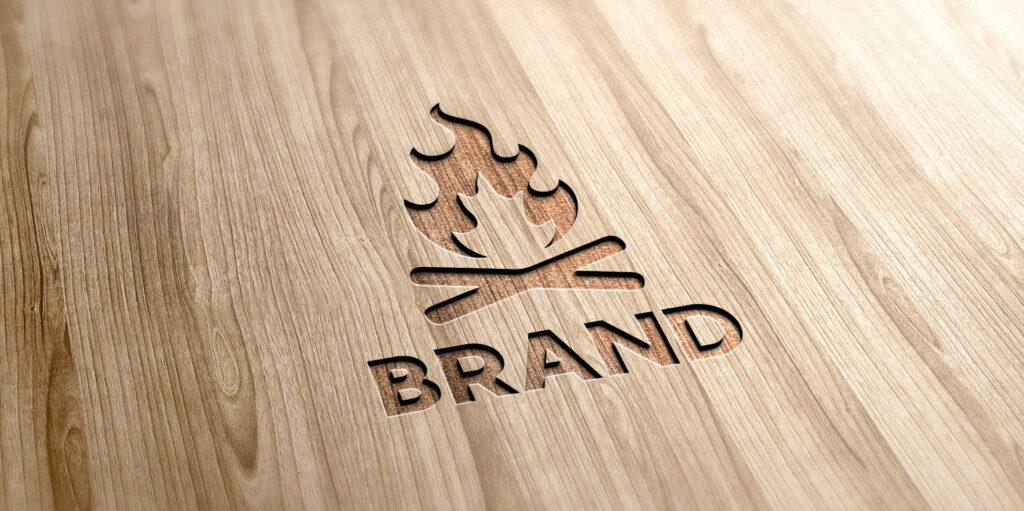What Is Branding?
Branding is more than just a series of slogans and a logo that represents your business. Rather, it is an image and a promise that you make to the customer. Every business is perceived in a certain light by a demographic of customers and a strong branding strategy can help you create the best possible image. It can help you communicate who you are, what the business stands for and the values that lie therein.
This can be communicated through several forms of visuals like logos, advertisements, customer reviews on display on public forums, the mission statement on the company website and so on. The methods of putting across such a specific message are endless and only limited to your own creativity. Branding is used to distinguish the products or services of a business from that of the competitors. By making this distinction you create a persona for the brand in the public’s eye.
Why Is It Important?
As mentioned above, it helps you stand out and establish an image, but why is that important? Keep in mind that there are millions of brands and businesses out there, all of whom are vying for the same customers you are. This is especially true if you consider the competition within your own industry. Branding helps make your business the go-to source for a product or service by boosting the following areas:
Brand recognition
It is exactly what it sounds like and that is to help people easily identify the brand over a period of time. By repeatedly pushing ads, the logo and other brand imagery you subconsciously implant the image of your brand in the customer’s mind. The next time they are walking by a poster or a store with your logo on it, it will immediately register in their minds.
Brand awareness
This is not to be confused with brand recognition. It is a step beyond. Rather than have customers merely know that this is your brand by looking at a logo, you cultivate an association of the brand with the services you provide. That is to say, whenever the customer faces a certain need or issue, they should immediately think of your brand as one of the forerunners in the industry that can meet those needs.
Brand loyalty
Over time you will cultivate a customer base that knows and depends on your business for solving certain issues or meeting their needs. This translates into brand loyalty where the customer keeps coming back for more. Loyalty to the brand relies heavily on a good branding strategy and the quality of service you provide. Any business that wants to succeed will have to recognise that customers are the most valuable resource. It is all about consistency and quality.
‘‘
A well-recognised brand is a frequently used brand and that, in turn, makes for a successful brand.

Different Types Of Branding
Product branding
This is the type of branding that is centred around a specific product like when you think of bleaching chemicals for cleaning your bathroom one of the first things that come to mind is Harpic. It is familiarising and positioning the product in such a way that the customer would prefer that product above all else.
Corporate branding
As opposed to product branding which is very niche and narrow, corporate branding revolves around a branding strategy for a corporation or a business as a whole. Take Amazon, for example, we know them as the number one delivery service globally and for good reason. They have great reach, service and maintain high quality. New initiatives and products by the company are promoted and well-recognised as a result of corporate branding.
- Co-branding can also fall into this category. It is essentially when two or more companies combine efforts to promote each other’s products or services for a wider reach.
Personal branding
People can be a brand like celebrities, actors, politicians and so on. Their entire careers rely on the publics’ perception of them and so they work tirelessly to cultivate the ideal image. On the business front, influencers are a good example of self-branding professionals. It is a great way to create a following on social platforms.
Geographical branding
This type of branding is region-specific and plays on the uniqueness of a business based on where it is located. For example, Japanese Sushi is a product that is very unique to the Japanese regions and a company can play on that authenticity if it were to set up a sushi restaurant.
Minimalism branding
It relies on the concept that just the product is enough to promote the brand. The quality of the product is so high that it will propel the brand forward in the public’s eye. It is a very modern approach that should be used with caution as it may not always work.
How to Define Your Own Brand
Define your brand
Right off the bat, you want to start by defining what it is your brand stands for and how you want to represent it in the public domain. It is a tough and time-consuming process. You can start it off by answering the following questions:
- What is the mission of the brand?
- What are the benefits of choosing your brand over the competition?
- What qualities do you want the customer to associate with your brand? That is to say, what is the perceived image you would like to create?
After you have outlined the core concept, do some research. Find out exactly what people think of the brand so far and this will give you an idea of how to take it forward.
The logo and slogan
The traits that you want to establish for your brand should reflect exactly in the logo. It is a symbol of what you stand for and you need to consider it carefully. The same goes for the slogan. It should be easy to remember. A catchy slogan and an eye-catching logo are the fastest way to build brand awareness.
The personality, image and voice of the brand
This part of the strategy refers to how you frame your identity – the moulding process. The image of the brand ties into the voice and personality, think of a brand as a person. Everyone has a unique personality that makes them one-of-a-kind. The images you use in the marketing to represent that tone of the messages you deliver needs to be consistent and bold. Together these elements will make up the perception of your brand.
Create a template for the brand
Finally, all of these elements need to be bound together by a standardised set of guidelines. That is to say, you need rules that say your brand can only use certain images, carry certain tones, a fixed colour pallet for advertisements, logo placements and so on. As a business progresses there are bound to change down the line, so a standard rulebook will help you maintain the core of what your brand is supposed to represent despite whatever changes might happen.

Key Elements Of Strong Branding
As a rule of thumb, any brand strategy should contain the following elements and should focus on them regardless of the number of different steps you take or the approach.
Target audience
Before even thinking about what your brand identity could be you need to know your target audience. A brand will not function without an audience to receive it. You need to look at who will find the most use for the business, where they live, how old they are, what their income is. The demographic information will give you all the data you need for a more targeted and narrow branding strategy.
Telling a story
A generic message will get people’s attention, but a meaningful story will grab people’s hearts. Emotions illicit investment. The more people connect with the brand the more loyal they will be down the road. Humanise the business and help people identify with the message you put out.
Brand position
Where do you stand in contrast to your competition? Do customers see you as a better alternative? If not, then that is what you need to work on. Give the customers a reason to choose you over the hundreds of other brands in the market by providing them with the right solution.
For that as you saw earlier you need to have an idea of who they are and what issues they face. This element combines all the steps of brand imagery, voice, personality, slogans and logos. All the above steps in this article culminate to position your brand in the market and give you the best chance at success.
For an example of a business with a fantastic brand strategy, let us go back to the earlier example of Amazon. It is the number one e-commerce business in the world. It boasts a vast network of global offices and delivery systems they always deliver on time and with quality.
The quality of service has made the company a household name and it has one of the most recognisable logos in the world. The symbolism is also excellent with the little arrow pointing from the ‘a’ to ‘z’, which indicates ‘A-Z delivery’ – a great example of how the core concept of the brand is distilled into a single image.
‘‘
There are many strategies to get your brand in the right position, but do not try to do them all, that can cause more harm than good. Streamline the process according to your busniess needs.
Some Common Mistakes To Avoid
Do not try to win everyone over
Realistically speaking not everyone is going to be a fan of your brand and that is to be expected. It does not matter how perfectly you carry out your branding strategy. The main objective is to keep the focus on providing your target audience with the highest quality of service possible. Reinforce your brand image in the eyes of your loyal customers instead.
On that note, do not make too many promises. Businesses often make the mistake of biting off more than they can chew. Making a promise to customers and not being able to deliver on it will do more harm than good. Stick to your brand strategy – make sure that every promise or deal is doable and that it agrees with your brand image.
Focus on the long-haul instead of short-term
When one strategy fails do not jump onto the next branding strategy blindly or too frequently. The key with any branding is consistency. Consistency of a brand image and message will work in the long run if you give it time. If you focus on only the short-term failure and keep changing tracks, it will send the wrong message to the audience.
Do not be a copycat
Originality is of very short supply these days when it comes to branding. The reason research is so important with brand strategy, is so that you know what has been done. This way you can do something better and original. The only way to stand out from the crowd is to stand apart from it and that means inventing your own brand image. Uniqueness only comes from originality. So, regardless of what the data might suggest, do not try to imitate what even the biggest players are doing.
Having said all that, remember that branding is but a small slice of the pie that is marketing. Read our article on ‘marketing’ and get the bigger picture for a more successful business strategy.




